
- Home
- Workshops / Tours
- Diary / Blog
- Galleries
- Foreign Trips
- Tasmania 2016
- NE Queensland 2016
- Western Alps 2016
- NE Spain 2016
- Australia's Wet Tropics 2015
- Australia's Top End 2015
- SW Australia 2015
- Switzerland 2015
- Andalucia 2015
- Belize 2015
- Australia 2014
- Switzerland 2014
- Belize 2014
- Bahama Islands 2014
- Switzerland 2013
- Ecuador 2012-2013
- Florida 2011-2012
- Vancouver Island 2011
- Australia 2010
- Peru 2008
- Bulgaria 2007
- Lesvos 2006
- California 2006
- New Zealand 2005
- Extremadura 2005
- Goa, India 2004
- The Gambia 2003
Southern Peru
25th November-14th December 2008
Machu Picchu & Aguas Calientes
Machu Picchu is one of the most famous archeological site in the world. Not only are the ruins well preserved, but it is also situated in one of the most stunningly beautiful settings imaginable.
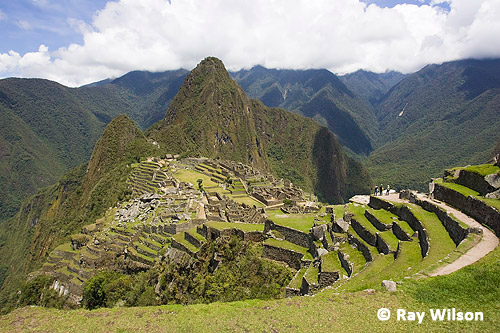
It was built around 1450-1470 AD (based on an analysis of ceramic pottery designs found at the site) as a royal estate for the Inca emperor Pachacuti Inca Yupanqui, and had space to house a maximum of 750 people within the "palace" walls. Only 80 years after its construction the site was abandoned.
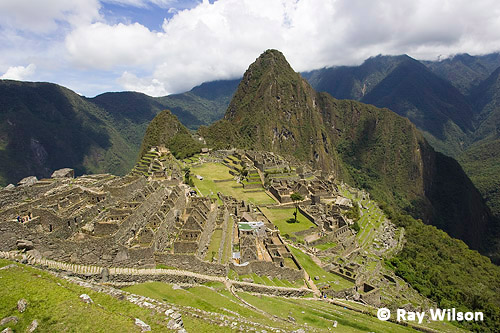
Unlike the other major royal estates built for Pachucuti, such as the ones found at Pisac and Ollantaytambo, Machu Picchu has a strong religious element to its construction and layout with about 30 of the structures thought to have been used for religious activities. The current accepted academic theory is that while the estates at Pisac and Ollantaytambo were built to commemorate Pachucuti's prodigious millitary conquests, Machu Picchu was built to signify his divine power.
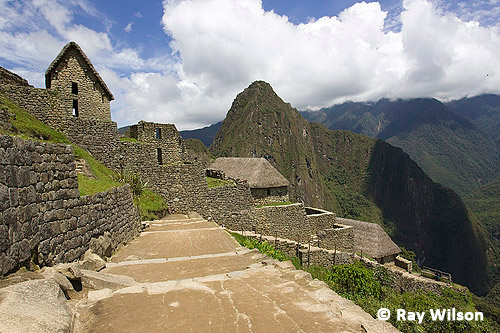
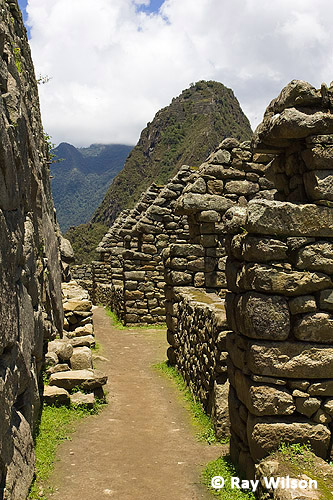
A street in the retainers quarter |

Vertigo-inducing terraces |
Pachacuti was the first Inca emperor to claim a special relationship between the royal lineage and the supernatural forces associated with the landscape and the celestial sphere, essentially claiming he was a living god, or at least was in direct communication with the gods.

Adjacent to the Temple of the Sun (Torreón) is the emperor's compound which is separated from all the other domestic buildings. There are 3 other major "elite" compounds or "kanchas" to the east of the central plaza.
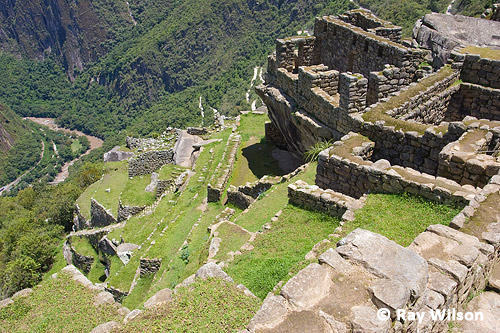
One of the buildings is built on top of a overhaning rock!
The terraces would have been used for growing crops. Nowadays, llamas are used as agile grasscutters to help keep the vegetation in check.
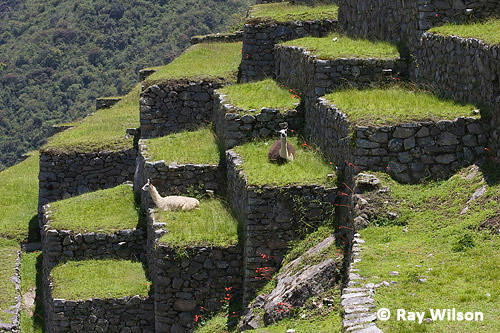
The Llamas take a rest from their grass cutting duties.
Down in the valley, the best places to look for birds in the Aguas Calientes area are along the road to Machu Picchu and along the railway line.
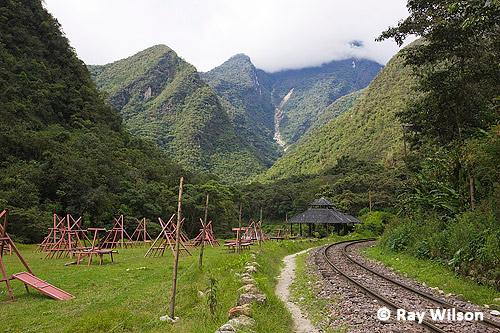
Campground along the railway just outside of Aguas Calientes
If you follow the railway line up river, there are several places you can see Torrent Duck.
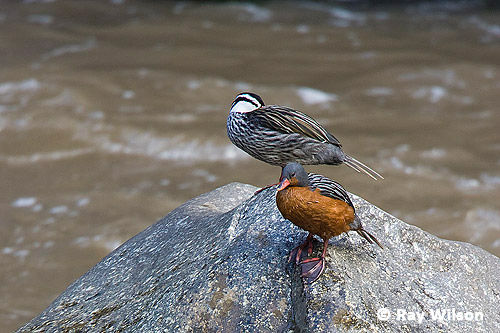
male and female Torrent Ducks (Merganetta armata)
These ducks are amazing swimmers and can even make good progress swimming against the very strong current of the Urubamba River.
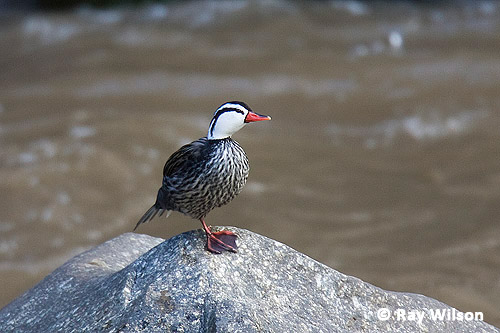
male Torrent Duck (Merganetta armata)
Another fast water specialist is the Torrent Tyrannulet, which is only found close to fast rivers.
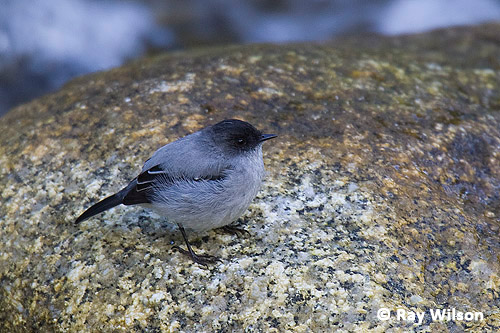
Torrent Tyrannulet (Serpophaga cinerea)
This one was having a bath in the middle of a feeder stream...
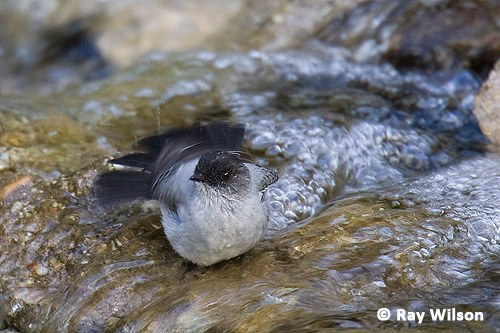
Torrent Tyrannulet (Serpophaga cinerea)
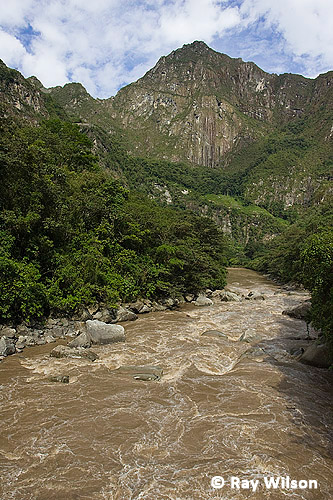 Rio Urubamba |
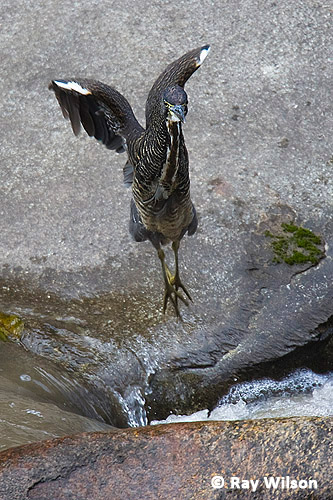 Fasciated Tiger-Heron (Tigrisoma fasciatum) |
Blue-Grey Tanager was the commonest tanager in the area.
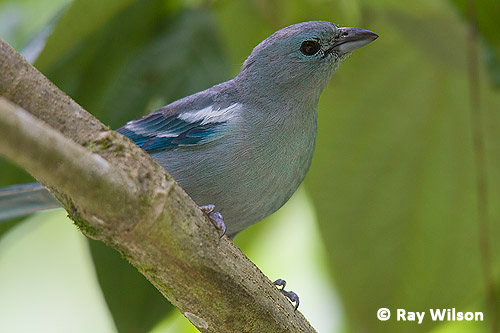
Blue-Gray Tanager (Thraupis sayaca)
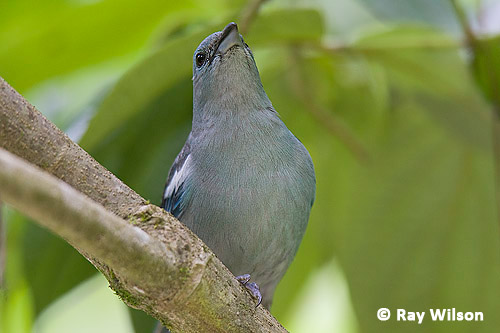
Blue-Gray Tanager (Thraupis sayaca)
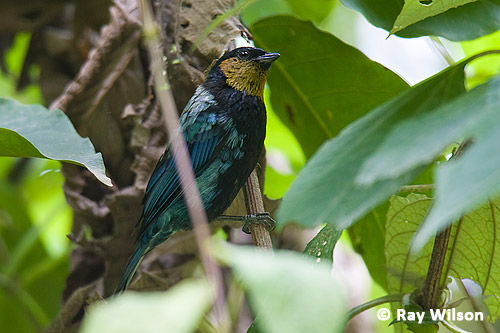
Silver-backed Tanager (Tangara viridicollis)
Blue-and-white Swallows are common throughout the valley and several nests can be found in small gaps in the walls of the ruins of Machu Picchu itself.
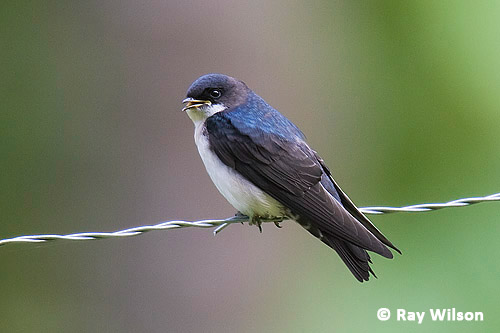
Blue-and-white Swallow (Pygochelidon cyanoleuca)
Both the range-restricted, endemic Green-and-white Hummingbird and the very similar White-bellied Hummingbird occur in the valley.
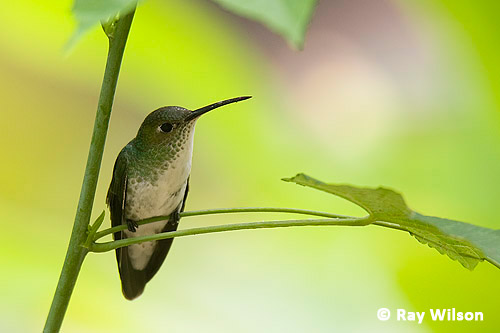
Green-and-white Hummingbird (Amazilia viridicauda)

Green-and-white Hummingbird (Amazilia viridicauda)
The Ocellated Piculet is a tiny member of the woodpecker family and is about the same size as a European (Winter) Wren.
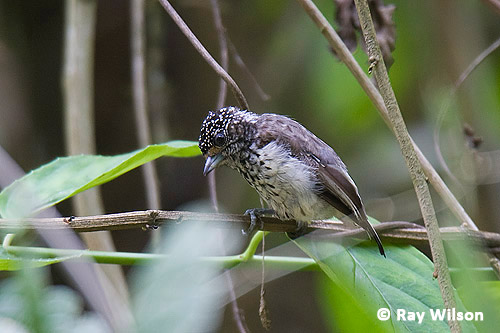
Ocellated Piculet (Picumnus dorbignyanus)
The American Wood Warblers (Parulidae) are represented by several fairly common species...

Pale-legged Warbler (Basileuterus signatus)
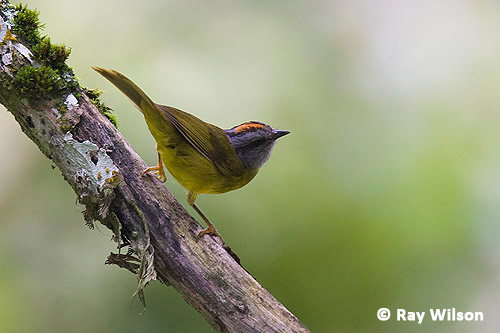
Russet-crowned Warbler (Basileuterus coronatus)
The Antshrikes and antwrens form part of a large, exclusively South American family comprising over 200 species.
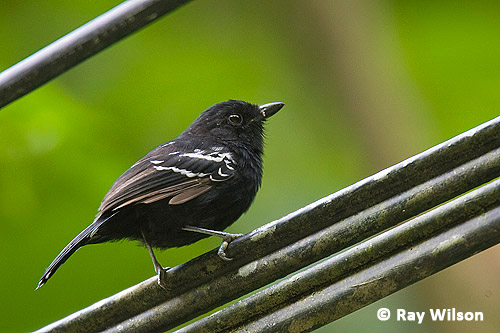
Variable Antshrike (Thamnophilus punctatus)
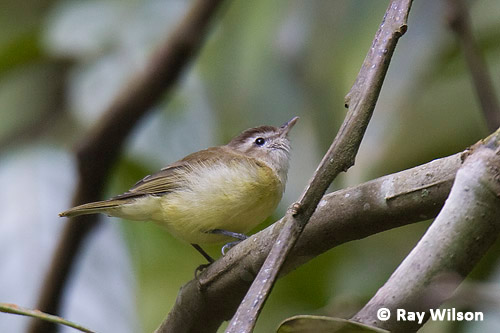
Brown-capped Vireo (Vireo leucophrys)
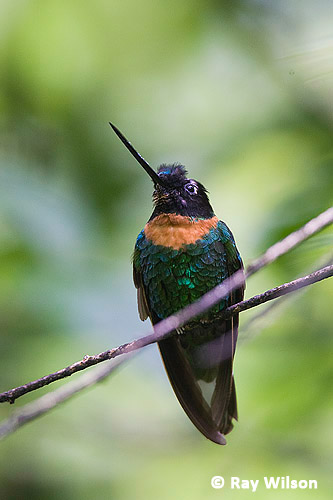 Collared Inca (Coeligena torquata) |
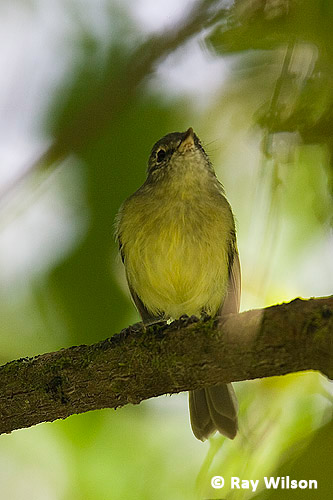 Mottle-cheeked Tyrannulet (Phylloscartes ventralis) |
Collared Inca is the most striking and charismatic of the hummingbirds in the area and can frequently be seen feeding on fuschia flowers.
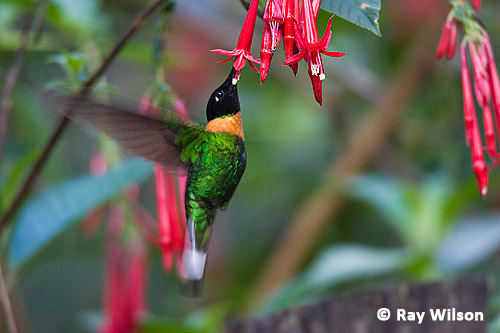
Collared Inca (Coeligena torquata)
There are over 370 species of Orchid in the immediate area of Aguas Calientes, the greatest diversity of orchids found anywhere on the planet. The species shown below is very common and its flower is quite large (about 10cm across).
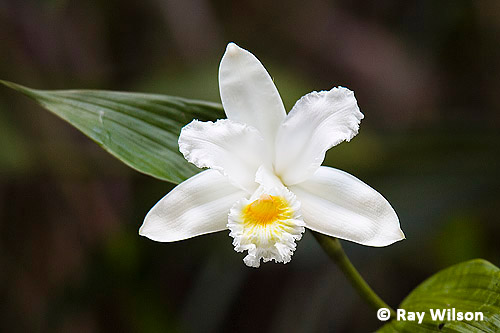
Sobralia virginalis - one of the commonest of the 370+ orchid species at Machu Picchu
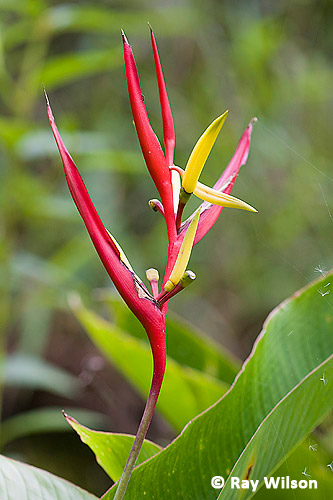
Ray Wilson owns the copyright of all images on this site.
They may not be used or copied in any form without prior written permission.
raywilsonphotography@googlemail.com